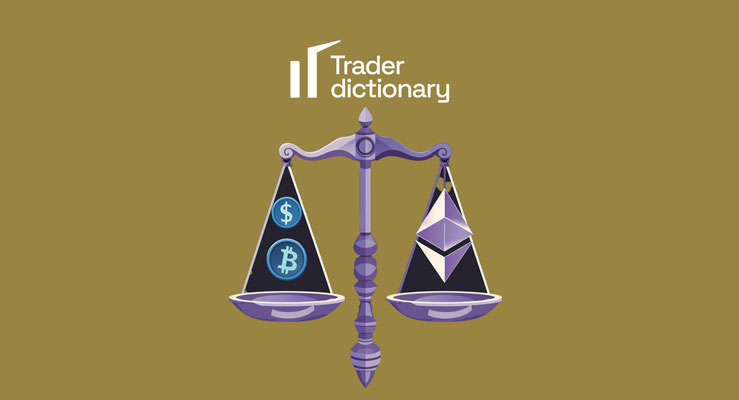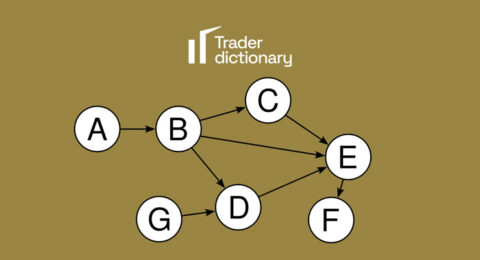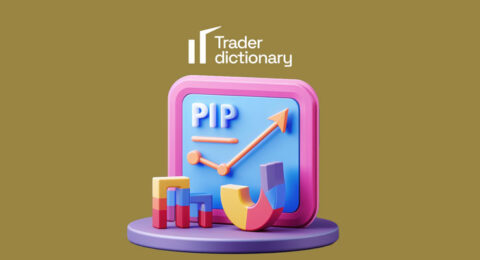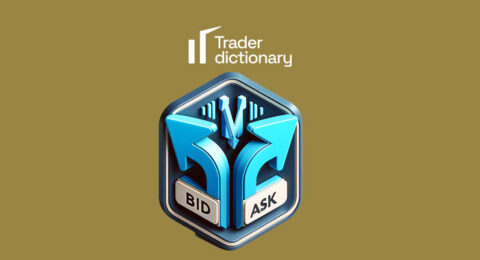In the dynamic world of cryptocurrencies, stablecoins have emerged as an indispensable part, bringing the necessary stability to the volatile market seas. But do you really understand them? Join us in exploring and clarifying the concept as well as the important role that stablecoins contribute in both the digital financial system and personal investment. Starting from the basic nature of stablecoins, we will delve into their understanding and application in practice.
What are Stablecoins?
Stablecoins, a term no longer strange in the cryptocurrency world, but have you really understood them? As an expert at connextfx.com, I want to share an in-depth view of this type of currency. Stablecoins, true to their name, are cryptocurrencies with stable values. Their highlight compared to other cryptocurrencies like Bitcoin or Ethereum is their value stability. This is achieved by pegging the value of stablecoins to other stable assets such as USD, gold, or even other currencies.
Why are stablecoins important? In a market famous for strong volatility, stablecoins act as a solid anchor. They help mitigate risk in transactions and provide a safe medium of exchange, especially in large or long-term transactions. Moreover, stablecoins also play an important role in integrating cryptocurrency into the traditional financial system, opening opportunities for DeFi (Decentralized Finance) projects and many other financial applications.
In general, stablecoins are not only an important part of the cryptocurrency market but also a necessary element to promote the widespread acceptance and application of digital money in everyday life. Let’s learn more about them in the following parts of this article!
What Role Do Stablecoins Play?
Stablecoins, in their role in the world of cryptocurrency, are truly a significant advancement, important not only in transactions but also in the entire digital financial system.
First and foremost, stablecoins bring stability. In a market known for strong price volatility, stablecoins act as a lifesaver, helping users and investors avoid the risks associated with this volatility. This is extremely useful for those seeking safety in investment.
Next, stablecoins facilitate cross-border transactions and payments. With their stable value, they become an ideal medium of payment in international transactions, minimizing exchange rate risks.
Additionally, stablecoins play an important role in promoting the development of DeFi (Decentralized Finance). They create a stable environment for the development of financial products and services, from lending and borrowing to derivative production.
Finally, stablecoins are an important stepping stone in integrating cryptocurrency into the traditional financial system. They open the door for wider acceptance of cryptocurrency in everyday transactions, from online shopping to money transfers.
In summary, the role and importance of stablecoins in making the cryptocurrency market more accessible, safer, and user-friendly cannot be denied. Stablecoins are not only a part of the cryptocurrency market but also a key element in shaping the future of digital finance.
Advantages and Disadvantages of Stablecoins
Advantages
- Here are the notable benefits that stablecoins offer:
- Value Stability: The most prominent feature of stablecoins is their ability to maintain stable value, making them a safe choice in the volatile cryptocurrency market.
- Convenient International Transactions: With stable value, stablecoins are excellent for international transactions and payments, reducing exchange rate risks.
- Bridge to Traditional Finance: Stablecoins help connect the cryptocurrency world with the traditional financial system, expanding cryptocurrency acceptance.
- Development of Decentralized Finance (DeFi): They facilitate the development of DeFi projects, offering new investment and financial service opportunities.
- Minimizing Investment Risks: With stability, stablecoins help investors reduce risks compared to investing in other highly volatile cryptocurrencies.
- Easy Access and Use: Stablecoins are generally easier to use and access, attracting both beginners and professional investors.
- High Liquidity: Stablecoins usually have high liquidity on exchanges, making buying and selling as well as conversion fast and efficient.
- Support for Daily Payments: They can also be used for daily transactions, from online shopping to money transfers.
Disadvantages
Despite many advantages, it’s important to be aware of their limitations:
- Dependence on Collateral Assets: Stablecoins are often tied to other assets like USD or gold, creating dependence and risk if those assets depreciate.
- Legal and Regulatory Risks: Unclear legal regulations can affect the stability and reliability of stablecoins.
- Inflation Potential: In some cases, excessive issuance of stablecoins can lead to inflation, devaluing them.
- Limited in Innovation and Features: Compared to other types of cryptocurrencies, stablecoins may be more limited in innovation and features due to their stable nature.
- Management and Security of Collateral Assets: Managing and securing assets for stablecoins can be complex and resource-intensive.
- Limited Interoperability: Some stablecoins may not interact well with all types of blockchains and cryptocurrency applications.
- Market Acceptance: Despite their popularity, not all investors and markets accept or understand stablecoins.
- Not Completely Stable: In rare cases, stablecoins can still be affected by market fluctuations if there are issues with the collateral assets. Despite these limitations, stablecoins remain an important tool in the cryptocurrency market, but investors need to carefully consider and understand them before making investment decisions.
What are the Types of Stablecoins?
The common types of stablecoins currently available:
- Fiat-Collateralized Stablecoins: The most common type, with value guaranteed by fiat currencies like USD, EUR. Each stablecoin in this category corresponds to a specific amount of fiat currency held in a bank account. Typical examples are USDT (Tether) and USDC (USD Coin).
- Crypto-Collateralized Stablecoins: This type uses other cryptocurrencies like Ethereum or Bitcoin as collateral. This creates a more complex structure but offers flexibility in management. An example is DAI, backed by Ethereum.
- Non-Collateralized Stablecoins: These have no specific collateral but use algorithms to adjust supply and demand to maintain stable value. An example is Basis, an algorithmic stablecoin.
- Commodity-Collateralized Stablecoins: These stablecoins are backed by real assets like gold or oil. This provides an attractive option for those who want to combine the stability of currency with the value of real commodities. A notable example is Pax Gold (PAXG), backed by gold. Each type of stablecoin has different characteristics and applications, depending on user needs and investment strategies. Understanding the types of stablecoins will help investors choose the right investment vehicle and safely navigate the cryptocurrency world.
Leading Stablecoins Today
Each stablecoin has its unique features and advantages, catering to the diverse needs of users and investors.
- Tether (USDT): The most popular stablecoin currently, pegged to the USD. USDT is widely used in transactions and as a stabilizing tool in the cryptocurrency market.
- USD Coin (USDC): Similar to USDT, USDC is also pegged to the USD and managed by Circle and Coinbase. It is known for its transparency and reliability.
- Binance USD (BUSD): Issued by Binance, one of the world’s largest cryptocurrency exchanges, BUSD is backed by USD and highly stable.
- Dai (DAI): Unique in that it is backed by Ethereum and other assets instead of just USD. DAI is widely used in the DeFi ecosystem.
- TrueUSD (TUSD): Another USD-pegged option, TUSD stands out for its transparency and strict adherence to legal regulations.
- Paxos Standard (PAX): PAX is also a USD-pegged stablecoin, known for its high safety and transparency in asset management.
- TerraUSD (UST): Although a newer stablecoin, UST has quickly become popular, especially in the Terra ecosystem. Each of these stablecoins has distinct characteristics, suitable for different user and investor needs. Understanding these stablecoins will help you make wise decisions in selecting and using them in cryptocurrency transactions and investments.
Where to Buy Stablecoins?
Centralized Exchanges (Cex)
Buying stablecoins on centralized exchanges (Cex) is a popular and reliable option. Key points to note:
- Ease of Use: Cex platforms often have user-friendly interfaces, suitable for beginners.
- Safety and Reliability: Most Cex are regulated and comply with legal standards, creating a safe trading environment.
- Multiple Payment Methods: You can buy stablecoins using various methods like bank transfers, credit/debit cards.
- Quick Conversion: Converting from fiat to stablecoin (and vice versa) is typically fast and efficient on Cex.
- Customer Service: Cex provide customer support services to resolve issues and inquiries..
Decentralized Exchanges (Dex)
Buying stablecoins on Dex is also an attractive option, especially for users seeking more autonomy and higher security. Some features include:
Autonomy and Privacy: Dex doesn’t require personal information, offering autonomy and privacy to users.
Direct Interaction: Trading on Dex involves direct interaction between users without intermediaries.
Low Transaction Fees: Transaction fees on Dex are usually lower than on Cex.
Diversity of Assets: Dex offers a variety of cryptocurrencies, including less popular stablecoins.
Decentralized Trading Experience: Dex provides a decentralized trading experience, giving users full control over their assets.
The choice between Cex and Dex depends on specific needs and comfort with technology. Each option has its own advantages and disadvantages, so thorough research before deciding is important.
How are Stablecoins Used?
Stablecoins, with their stable nature, are becoming increasingly important in the digital financial world. Let’s explore the common uses of stablecoins today:
- Trading and Investment: Stablecoins are widely used in cryptocurrency trading and investment. They help investors quickly switch between different cryptocurrencies without worrying about price fluctuations.
- Payment Medium: Thanks to their price stability, stablecoins are increasingly accepted as a payment medium, not only in the cryptocurrency world but also in real-world transactions like online shopping and money transfers.
- Decentralized Finance (DeFi): Stablecoins are an essential part of DeFi projects, facilitating lending, borrowing, and other financial activities without traditional banks.
- Value Preservation in Market Volatility: During volatile periods in the cryptocurrency market, stablecoins are often seen as a safe haven to preserve asset value.
- International Currency Conversion: Stablecoins are also used for international currency conversion, helping reduce costs and time for cross-border money transfers.
- Salary Payments and Contracts: Some companies and organizations have started using stablecoins for salary payments or contract execution, especially in technology and freelance services.
- Asset Storage and Security: For those concerned about the instability of traditional currencies or wanting to diversify assets, stablecoins are a good option for storage and security. Stablecoins not only provide necessary stability in the cryptocurrency world but also open up new possibilities for finance and payments. Their flexibility and versatility make stablecoins an important tool in modern digital finance.
How to Make Money with Stablecoins?
In the growing cryptocurrency market, the question “How to make money with Stablecoins?” becomes very interesting and important. Stablecoin is not just a tool to preserve asset value but also opens up unique money-making opportunities:
Interest from Lending and Staking: One of the most common ways to make money from stablecoins is through lending or staking. Users can deposit their stablecoins on DeFi platforms and receive competitive interest rates.
Arbitrage Trading: Due to price differences between various exchanges, users can buy stablecoins at a lower price on one exchange and sell them at a higher price on another to make a profit.
Yield Farming: This involves using stablecoins in DeFi protocols to receive rewards, usually in the form of new tokens or higher interest rates.
Payment and Services: Some businesses accept stablecoin as a form of payment for goods and services, allowing users to earn from these transactions.
Creating and Managing a Stablecoin Fund: Users with knowledge and skills can create a stablecoin investment fund, manage assets, and earn profits from smart investment strategies.
Futures Contracts and Derivative Trading: Using stablecoins to participate in futures and derivatives markets can be profitable if one knows how to analyze and predict the market.
Consulting and Training Services: Sharing knowledge and experience about stablecoins can also be a source of income, through consulting or training services.
Stablecoins not only provide stability in the cryptocurrency world but also open up diverse money-making opportunities for savvy users. Understanding and a flexible approach to stablecoins can help maximize profits in the cryptocurrency market.
Are Stablecoins Regulated?
In the world of cryptocurrency, a frequent question is: “Are Stablecoins regulated?” This is extremely important as it relates to the transparency and safety of stablecoins. Let’s analyze this issue:
Legal Regulation: Depending on the region and country, stablecoins may be subject to financial and legal authorities’ regulation. Some countries have developed specific legal frameworks for stablecoins, while others are still in the process of building.
Transparency and Legal Compliance: Stablecoin issuers often have to comply with financial transparency and reporting requirements to ensure they have sufficient assets or fiat money to back the issued stablecoins.
Central Bank Supervision: Some central banks are considering supervising stablecoins, especially those with a significant impact on the global financial system.
Anti-Money Laundering (AML) and KYC Regulations: Stablecoins often have to follow regulations on anti-money laundering and know your customer (KYC) to prevent illegal financial activities.
Challenges in Regulation: Regulating stablecoins is not always easy due to their decentralized and global nature. This requires international cooperation and continuous regulation updates.
Differences Among Stablecoins: Note that the degree of regulation may vary depending on the type of stablecoin, for example, fiat-pegged versus algorithmic stablecoins.
Reserve Requirements and Audits: For stablecoins pegged to assets or fiat money, there may be requirements to maintain full reserves and periodic audits to ensure transparency.
Regulating stablecoins is a complex and evolving field. The stability and safety of stablecoins depend on how they are managed and supervised. Therefore, investors and users need to always stay updated with the latest regulations related to stablecoins.
Key Considerations When Buying Stablecoins
When deciding to buy stablecoins, there are important considerations to ensure that your investment process is safe and effective. Here are the main points to note:
Understand Different Types of Stablecoins: Different stablecoins have different operating mechanisms and risk levels. For example, fiat-pegged stablecoins like USDT and USDC have high stability, while algorithmic stablecoins may face price volatility risks.
Research Transparency and Safety: Check whether the stablecoin you choose is transparent about asset reserves and complies with legal regulations.
Choose Reputable Exchanges: Buy stablecoins from reputable exchanges to avoid fraud and security risks.
Check Transaction and Withdrawal Fees: Some exchanges may apply high transaction and withdrawal fees for stablecoins, so consider these carefully before trading.
Consider Regulatory Adjustment Risks: The cryptocurrency market is evolving and subject to regulatory adjustments, which can affect the value and liquidity of stablecoins.
Diversify Investment Portfolio: Don’t put all your eggs in one stablecoin; diversification helps minimize risks.
Monitor Market Fluctuations: Although stablecoins are quite stable, you should still monitor market fluctuations to respond timely to important events.
Consider Conversion Flexibility: Check whether the stablecoin can be easily converted to fiat or other cryptocurrencies.
Plan for the Long Term: Determine your investment goals with stablecoins and plan for the long term rather than seeking quick profits.
These considerations will help you approach buying stablecoins cautiously and intelligently, maximizing benefits and minimizing risks in your investment process.
Conclusion
To conclude this article, we have together delved deeply into the world of stablecoins, exploring their definition and importance in the modern cryptocurrency market. Hopefully, through this detailed information and analysis, you have gained a more comprehensive understanding of stablecoins, from their operating mechanisms to their practical applications in everyday life and investment strategies. Stablecoins are not just a bridge between the traditional currency world and cryptocurrency but also open up new investment opportunities, bringing stability and safety to investors. Continue to follow and stay updated with information to not miss the latest developments in the world of cryptocurrency.









